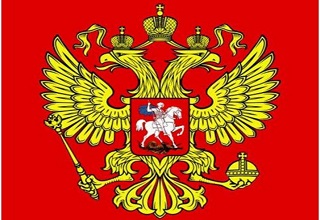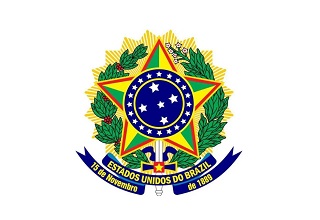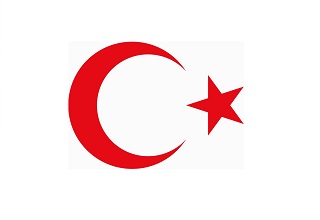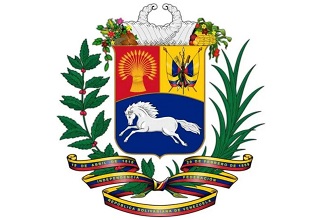Regarding the Inspection and Quarantine Requirements for the Citrus of Uruguay
1. Basis for inspection and quarantine
(1) The Biosafety Law of the People's Republic of China;
(2) The Entry-Exit Animal and Plant Quarantine Law of the People's Republic of China and the Regulations for its implementation;
(3) The Food Safety Law of the People's Republic of China and its implementing regulations;
(4) Measures for the Supervision and Administration of Inspection and Quarantine of Imported Fruits;
(5) Protocol between the General Administration of Customs of the People's Republic of China and the Ministry of Animal Husbandry, Agriculture and Fisheries of the East Coast Republic of Uruguay on Phytosanitary requirements for Uruguay's Fresh citrus to China.
2. Names of goods allowed to enter the country
Fresh Citrus (hereinafter referred to as "Citrus"), including Orange, Mandarin and their hybrids, Grapefruit, Lemon.
3. Permissible origin
Citrus area of Uruguay.
4. Approved orchards and packaging plants
Citrus orchards, packaging plants, cold storage and cold treatment facilities exported to China shall be reviewed and recorded in the Ministry of Animal Husbandry, Agriculture and Fisheries of the East Coast Republic of Uruguay (hereinafter referred to as Uruguay), and the General Administration of Customs of the People's Republic of China (hereinafter referred to as China) and Uruguay jointly approved for registration. The registration information shall include name, address and identification code for accurate traceability in the event that the export goods do not meet the relevant requirements. The registration list shall be provided by Uruguay to China before the annual export season. The list of approved companies can be found on the GACC website.
List of quarantine pests of concern to China
1. Anastrepha fraterculus
2. Ceratitis capitata
3. Ceroplastes rusci
4. Coccus perlatus of citrus
5. The rose has a short beak like Pantomorus cervinus
6. Planococcus minor
Seven. Elsinoe australis
6. Pre-export management
(1) Orchard management.
1. All orchards exported to China establish and implement Good Agricultural Practice (GAP) certification or other international certification system to ensure the traceability of the production process; Maintain hygienic conditions in orchards, remove rotten fruit at harvest, and implement integrated pest management (IPM) measures, including control measures such as pest monitoring, chemical or biological control, and farm operation control measures. Each orchard must choose one of the following measures: remove the fallen fruit, collect the fallen fruit in a box at harvest, or spray the fallen fruit with fungicide.
2. Orchard growers imported to China should implement effective pest monitoring and comprehensive control measures under the supervision of Uruguay to avoid and prevent the occurrence of quarantine pests of concern to China.
3. Phytosanitary measures for imported orchards should be carried out under the guidance of technical personnel with knowledge of phytosanitary, such as pest control and monitoring. The orchards exported to China shall keep the records of pest monitoring and control and provide them to China upon request. Control records include information on the names, active ingredients, dates of use and concentrations of chemicals used during the growing season.
4. In view of the Mediterranean and South American bactridia, Uruguay should establish a monitoring system for the Mediterranean and South American bactridia. The Jackson trap used Trimelure as the lure, and the McPhail trap used hydrolyzed protein as the lure, and the trap was checked every 7 days. The Uruguay side should keep records of the above-mentioned monitoring activities and supervision for China's review.
(2) Packaging plant management.
1. The processing, packaging, storage and shipment of citrus must be carried out under the supervision of Uruguay official quarantine.
2. At the time of picking, citrus from registered orchards in Uruguay shall not be packed in the same box as citrus from unregistered orchards. If it is found that there is no separation, Uruguay shall prohibit the export of the batch of citrus and suspend the export of citrus to China for that export season involving orchards and exporters.
3. After picking, the citrus should be soaked in chlorinated water or sprayed, brushed, treated with fungicide, waxed, fruit selection and packaging to ensure that there are no quarantine pests of concern to China, and no branches, leaves and soil.
4. The storage and/or cold storage shall be used exclusively for the storage of fresh citrus, with appropriate phytosanitary conditions, and the citrus shall be stored in accordance with the safety measures established by Uruguay. Safety and epidemic prevention measures shall be taken in the transportation of citrus in the above storage warehouses and cold storage warehouses.
(3) Packaging requirements.
1. The packing boxes of citrus exported to China should be clean and hygienic for first use. Packaging materials such as the use of wood packaging, should meet the requirements of the international wood packaging standards.
2. Citrus packaging boxes should be marked in English with fruit type, export country, origin, orchard name or registration number, packaging factory name or registration number.
3. On each packing case, "Exported to the People's Republic of China" should be marked in English.
(4) Requirements for quarantine treatment.
1. Citrus exported to China should be produced from the Mediterranean and South American fly non-infected areas, or cold treatment measures should be taken en route to kill the larvae of these flies. Non-infected areas shall be established and maintained in accordance with International Standard for Phytosanitary Measures 4 (ISPM 4). The status of a non-epidemic area is subject to joint approval by the Chinese and Uruguay sides.
2. For citrus from areas that are not fly-free and non-endemic, cold treatment shall be carried out in an automated refrigerated container under the supervision of Uruguay or its authorized officials in accordance with the operating procedures (see annex). Cold treatment technical indicators are as follows:
(1) For oranges, oranges, hybrids and grapefruits, the cold treatment temperature requirements must meet one of the following conditions:
1.11°C or below for more than 15 days;
1.67°C or below for more than 17 days;
2.22°C or below for more than 21 days.
(2) For lemons, the cold treatment temperature requirements must meet the following conditions:
3°C or below for more than 24 days.
(5) pre-export inspection and quarantine.
1. Before shipment, Uruguay shall carry out export plant inspection and quarantine, and sample inspection shall be carried out during fruit processing or on finished products after processing, with a sampling proportion of 1%.
2. If any live quarantine pest of concern to China is detected, the shipment shall not be exported to China.
3. If other quarantine pests are detected, the exporter and Uruguay shall immediately evaluate and investigate the orchards and packaging plants to find out the causes of the pests and take improvement measures.
4. When conducting on-site quarantine, the Uruguay quarantine personnel shall verify the information such as the origin or code marked on the packing box. If oranges are found to have come from unapproved orchards or packaging plants, the shipment is prohibited from being exported to China.
(6) Requirements for plant quarantine certificates.
1. The citrus that has passed the quarantine shall be issued a phytosanitary certificate by Uruguay, and the origin of the citrus shall be indicated in the column of "origin of the certificate", and the additional statement shall indicate in English:“The consignment is in compliance with requirement described in the Protocol of Phytosanitary Requirements for Export of Citrus from Uruguay to China, and is free from quarantine pest concern to China. "(The goods meet the requirements of the Uruguay citrus export pest concern to China protocol, No quarantine pests of concern to China.)
2. If cold treatment is implemented, the temperature of cold treatment, treatment time and container number and seal number shall be indicated in the phytosanitary certificate.
(7). Entry quarantine and nonconformity treatment
When citrus exported to China arrives at the entry port of China, the Chinese Customs shall conduct inspection and quarantine in accordance with the following requirements.
(1) Verification of relevant certificates and identification.
1. Check whether the imported citrus has obtained the Entry Animal and Plant Quarantine Permit.
2. Check whether the phytosanitary certificate complies with the provisions of Article 6 (6).
3. Check whether the marks on the packing cases comply with the provisions of Article 6 (3).
4. Check cold treatment report, fruit temperature probe calibration record, etc.
(2) Entry inspection and quarantine.
1. Uruguayan citrus exported to China should enter China at ports that allow the import of fruits.
2. When the citrus arrives at the Chinese port of entry, the Chinese Customs will check the relevant documents, labels, and carry out on-site plant inspection and quarantine and inspection.
3. In accordance with relevant laws, administrative regulations, rules and other provisions, the import of citrus shall be subject to inspection and quarantine, and those who pass the inspection and quarantine shall be allowed to enter the country.
(3) unqualified treatment.
1. If oranges are found to have come from unapproved orchards and/or packing plants, the shipment will be prohibited from entering the country.
2. If any live quarantine pest is found, the shipment will be prohibited from entry.
3. The cold treatment project will be suspended if any live Mediterranean fly and/or a combination of fly species is intercepted in the cargo for which the required cold treatment is carried out. The two sides will investigate the cause of the violation, and on the basis of taking corrective measures, resolve the issue of resuming citrus imports through mutual consultation.
4. If the cold treatment is found to be invalid or failed, the goods will be subjected to cold treatment on arrival (which can still be carried out in this container), return, destruction and other treatment measures.
It is hereby announced.
GACC
Nov. 29, 2023
Procedures for cold handling in transit
1. Container type
The container must be a transport container with its own (integral) refrigeration and has refrigeration equipment that can achieve and maintain the required temperature.
2. Recorder type
Uruguay shall ensure that appropriate combinations of temperature probes and temperature recorders are used:
(a) The probe temperature is between -3.0°C and +3.0°C, accurate to ±0.1°C.
(b) Having a sufficient number of probes.
(c) able to record and store processing data.
(d) Record the temperature of all probes at least once an hour, and the record display should meet the accuracy required by the probe.
(e) The printed temperature record should be the time and temperature recorded by each probe, and indicate the recorder and container number.
3. Temperature correction
(a) Must be calibrated with a standard thermometer approved by Uruguay in a plastic container with a mixture of crushed ice and clean water (each temperature probe calibrated 3 times).
(b) Any probe with a reading beyond 0°C±0.3°C must be replaced.
(c) A copy of the "fruit temperature probe calibration record" signed and stamped by Uruguay officials must be issued for each container, and the original must be attached to the plant quarantine certificate accompanying the goods.
(d) When the fruit arrives at the port of entry in China, China will conduct calibration inspection of the fruit temperature probe in accordance with the method of paragraph 1 of Article 3.
4. Installation of temperature probe
(1) The packaged fruit shall be placed in the shipping container under the supervision of the quarantine officer, and the stacking of the fruit boxes shall ensure that the air flow between the fruit packing box and the stacking room is smooth.
(2) Each container should be installed at least 3 fruit temperature probes, 2 box space temperature probes, the specific position is:
1. The No.1 probe is installed in the top central position of the first row of goods in the container;
2. he No. 2 probe is placed in the center of the container door 1.5 m (40 ft container) or 1 m (20 ft container) and at half the height of the goods;
3. The probe No. 3 is installed on the left side 1.5 meters away from the container door and at half the height of the goods;
4. Two Space temperature probes are respectively installed at the inlet and return air outlets of containers.
(3) The calibration and placement of temperature probes must be carried out under the supervision and guidance of authorized officials of the Uruguay side.
(4) Oranges, oranges and grapefruits should be stored (pre-cooled) in the cold room until the pulp temperature reaches 2°C or below.
(5) The lemons before packing shall be stored (pre-cooled) in the cold room until the pulp temperature reaches 3.5°C or below.
(6) The container shall be pre-cooled at least 30 minutes before loading the fruit.
(7) Containers can only hold the same kind of fruit, and the stacking height of fruits should be the same to ensure air circulation.
5. Seal of container
(1) Authorized Uruguay quarantine officers shall seal the containers containing the goods with coded seals.
(2) The seal can only be opened by a Chinese official at a Chinese port of entry.
6. Temperature record and confirmation
(1) The cold treatment in transit refers to the cold treatment during the first port of call of the container transporting citrus from the exporting country to China.
(2) The record can be activated at any time, however, the processing time can only be officially calculated when all the fruit temperature probes have reached the specified temperature.
(3) The shipping company shall download the cold treatment temperature record and submit it to China at the port of entry.
(4) The sea voyage may cause the cold treatment to be completed en route prior to the arrival of the ship at the port of entry in China, and the processing records may be downloaded en route and transmitted to China for review. However, according to the requirements, the cold treatment cannot be considered effective until China completes the re-calibration of the temperature probe. Therefore, it is a commercial decision whether to discontinue cold treatment before reaching China, such as gradually raising the temperature of transportation.
(5) China will verify whether the processing records meet the relevant processing requirements.
7. Plant Quarantine Certificate
(1) Cold treatment temperature, treatment time and container number and seal number must be indicated in the phytosanitary certificate.
(2) When the citrus enters the country, it is necessary to provide China with the phytosanitary certificate, cold treatment report and fruit temperature probe correction record.




